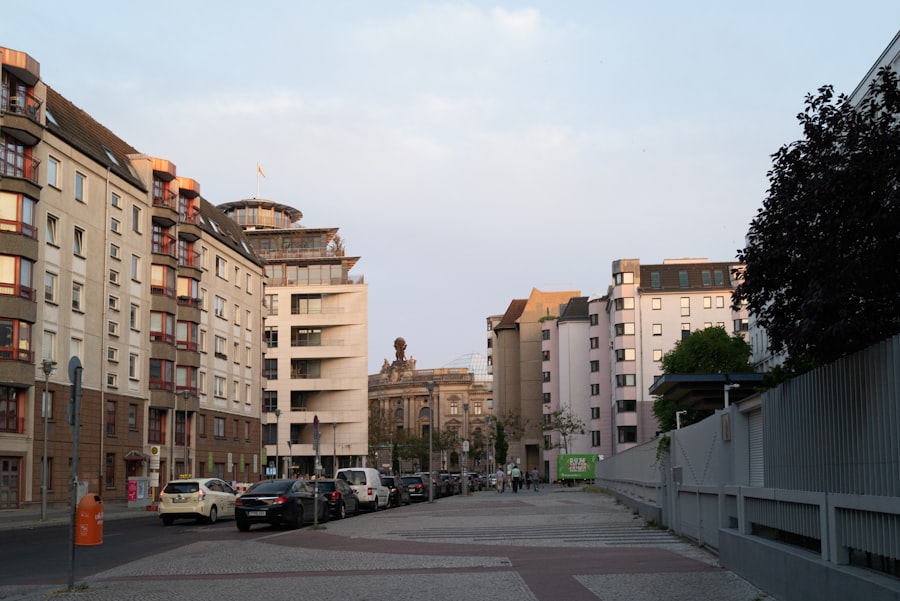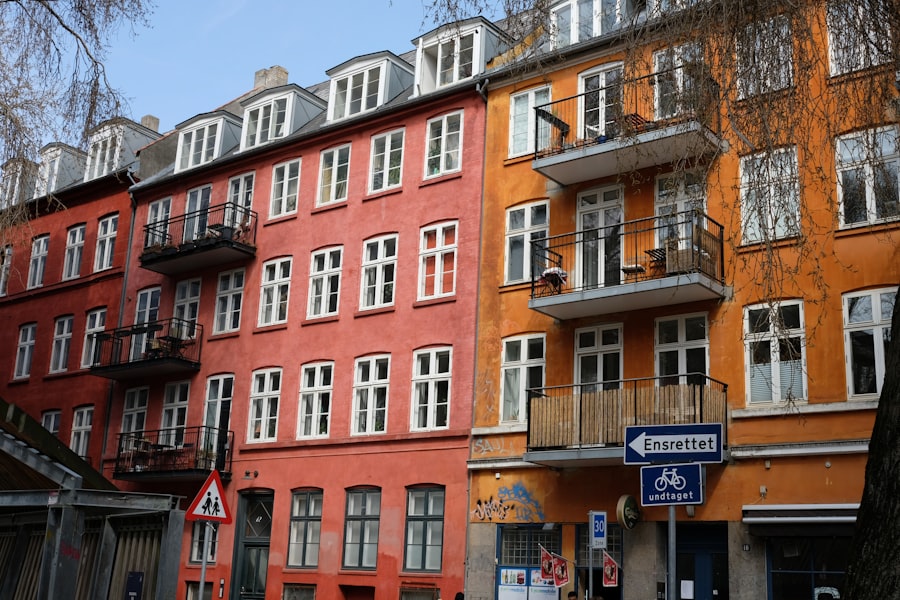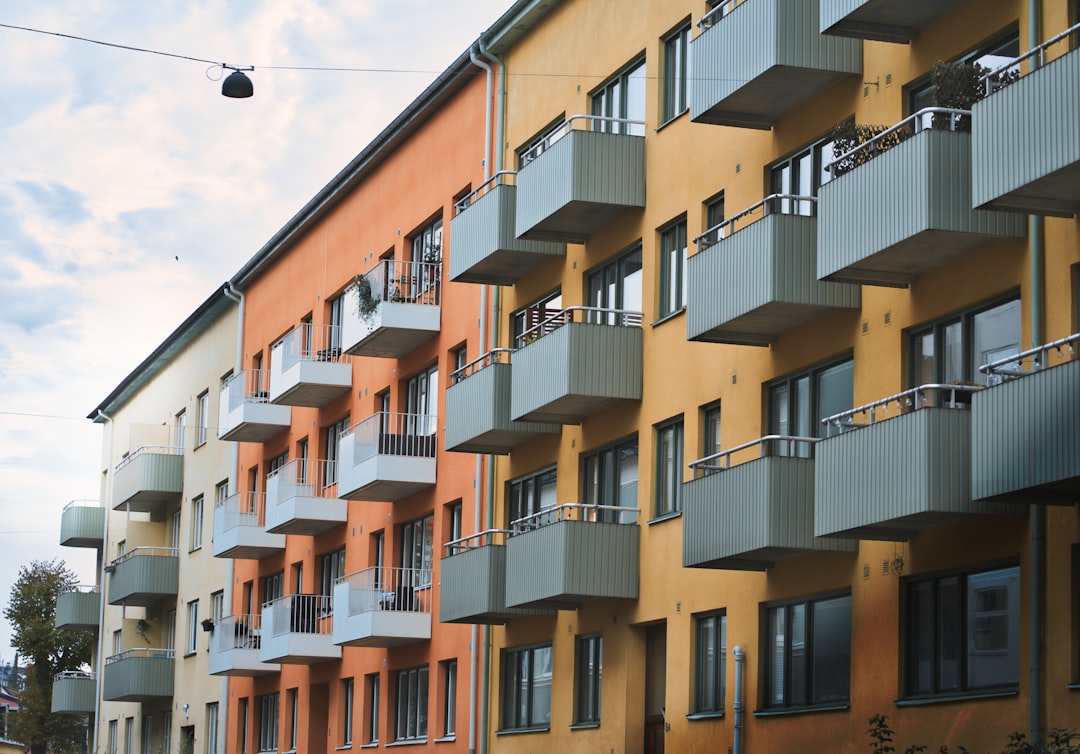Vienna’s social housing model has a rich and complex history that dates back to the early 20th century. Following World War I, the city faced a severe housing crisis, exacerbated by the destruction of infrastructure and a rapidly growing population. In response, the government initiated a series of reforms aimed at providing affordable housing for its citizens.
The establishment of the “Red Vienna” period in the 1920s marked a significant turning point, as socialist leaders prioritized social welfare and housing as fundamental rights. This era saw the construction of thousands of public housing units, designed not just to shelter the populace but to foster community and improve living standards. As you delve deeper into the history, you’ll find that the social housing model evolved through various political and economic challenges.
The interwar period brought about a shift in focus, with an emphasis on quality and design, leading to the creation of iconic housing complexes that are still celebrated today. After World War II, Vienna faced another housing crisis, prompting further expansion of social housing initiatives. The city’s commitment to providing affordable housing has remained steadfast, adapting to changing societal needs while maintaining a focus on inclusivity and sustainability.
Key Takeaways
- Vienna’s social housing model dates back to the early 20th century, with the construction of the first public housing projects in response to a housing crisis.
- Key features of Vienna’s social housing program include affordable rents, high-quality construction, and a mix of tenants from different income levels and backgrounds.
- Vienna’s social housing model promotes inclusivity and diversity by providing housing for a wide range of residents, including low-income families, students, and seniors.
- The impact of Vienna’s social housing model on the city’s economy is significant, as it creates jobs, stimulates local businesses, and contributes to a stable housing market.
- When comparing Vienna’s social housing model with other affordable housing programs, it stands out for its long-term sustainability and focus on community building.
- The government plays a crucial role in supporting Vienna’s social housing model, while the private sector contributes through partnerships and investments in housing projects.
- Challenges and criticisms of Vienna’s social housing model include concerns about bureaucracy, maintenance costs, and the potential for stigmatization of social housing residents.
- Success stories of residents living in Vienna’s social housing highlight the positive impact on their lives, including improved living conditions and a sense of belonging to a supportive community.
- The future of Vienna’s social housing model involves innovations such as energy-efficient construction and digital solutions, as well as adaptations to meet changing housing needs.
- Lessons learned from Vienna’s social housing model can inspire other cities to prioritize affordable housing, community integration, and sustainable urban development.
- Vienna’s social housing model has the potential to inspire change in affordable housing policies globally by demonstrating the benefits of a holistic and inclusive approach to housing provision.
Key Features of Vienna’s Social Housing Program
At the heart of Vienna’s social housing program lies a commitment to affordability and accessibility. One of the key features is the principle of mixed-income housing, which ensures that residents from various socio-economic backgrounds can live in the same community.
You will find that approximately 60% of Vienna’s population lives in some form of social housing, reflecting the city’s dedication to providing homes for all. Another notable aspect is the emphasis on quality and sustainability in design. The city invests significantly in modernizing existing buildings and constructing new ones that meet high environmental standards.
This includes energy-efficient designs and green spaces that enhance the quality of life for residents. Furthermore, Vienna’s social housing units often come with amenities such as playgrounds, community centers, and gardens, creating vibrant neighborhoods where people can connect and thrive. This holistic approach to urban living is a cornerstone of Vienna’s social housing success.
How Vienna’s Social Housing Model Promotes Inclusivity and Diversity

Vienna’s social housing model is a beacon of inclusivity and diversity, setting an example for cities worldwide. By integrating various income levels within the same neighborhoods, the city fosters an environment where different cultures and backgrounds can coexist harmoniously. This diversity enriches the community fabric, allowing residents to learn from one another and build meaningful relationships.
You will notice that many social housing projects are designed with communal spaces that encourage interaction among residents, further enhancing this sense of community. Moreover, Vienna’s commitment to inclusivity extends beyond just economic diversity. The city actively promotes gender equality and accessibility for people with disabilities in its housing policies.
By ensuring that social housing units are designed to accommodate individuals with varying needs, Vienna demonstrates its dedication to creating an equitable living environment for all. This focus on inclusivity not only benefits residents but also strengthens the overall community by fostering understanding and collaboration among its members.
The Impact of Vienna’s Social Housing Model on the City’s Economy
| Metrics | Data |
|---|---|
| Number of social housing units | Over 220,000 |
| Percentage of population living in social housing | Around 60% |
| Employment impact | Creates jobs in construction, maintenance, and management |
| Cost savings for residents | Reduces housing costs, allowing for more disposable income |
| Impact on local businesses | Supports local businesses through increased consumer spending |
The economic implications of Vienna’s social housing model are profound and multifaceted. By providing affordable housing options, the city alleviates financial pressure on low- and middle-income families, allowing them to allocate resources toward education, healthcare, and other essential needs. This financial stability contributes to a more robust local economy, as residents are better positioned to participate in consumer spending and contribute to economic growth.
You may find it interesting that studies have shown a direct correlation between affordable housing availability and increased economic productivity in urban areas. Additionally, Vienna’s social housing initiatives create jobs in construction, maintenance, and community services. The ongoing investment in housing infrastructure not only supports local employment but also stimulates related industries such as retail and services.
As you explore this aspect further, you’ll see how the city’s commitment to social housing has led to a thriving economy that benefits all residents, regardless of their income level.
Comparing Vienna’s Social Housing Model with Other Affordable Housing Programs
When you compare Vienna’s social housing model with other affordable housing programs around the world, several key differences emerge. Many cities struggle with high levels of homelessness and inadequate housing options due to market-driven approaches that prioritize profit over people. In contrast, Vienna’s model is rooted in the belief that access to affordable housing is a fundamental human right.
This philosophical foundation sets it apart from many other cities where affordable housing is often seen as a temporary solution rather than a long-term commitment. Furthermore, while some cities rely heavily on private developers to meet their housing needs, Vienna maintains significant public control over its social housing stock. This allows for greater oversight regarding quality, affordability, and inclusivity.
You may find it enlightening to examine how other cities could benefit from adopting similar principles, focusing on long-term solutions rather than short-term fixes that often exacerbate existing problems.
The Role of Government and Private Sector in Supporting Vienna’s Social Housing Model

The success of Vienna’s social housing model can be attributed to a collaborative effort between government entities and the private sector. The local government plays a crucial role in funding and regulating social housing projects, ensuring that they align with the city’s broader goals of affordability and sustainability. You will notice that public investment in social housing is substantial, with significant portions of the city budget allocated to maintaining and expanding these initiatives.
On the other hand, private developers also play an essential role in this ecosystem. By partnering with the government, they can contribute their expertise in construction and design while adhering to strict guidelines that prioritize affordability and quality. This collaboration creates a balanced approach where both public interests and private innovation can thrive.
As you explore this dynamic further, you’ll see how such partnerships can serve as a model for other cities seeking to improve their own affordable housing strategies.
Challenges and Criticisms of Vienna’s Social Housing Model
Despite its many successes, Vienna’s social housing model is not without challenges and criticisms.
As you investigate this issue, you may find that some critics argue that lengthy approval processes can delay necessary improvements or adaptations to changing societal needs.
This can hinder the ability of social housing to remain relevant in an ever-evolving urban landscape. Additionally, there are concerns about maintaining quality standards across all social housing units. While many projects are exemplary in design and functionality, others may fall short due to budget constraints or mismanagement.
You might find it interesting to consider how ongoing monitoring and evaluation could help address these issues, ensuring that all residents benefit from high-quality living conditions regardless of their location within the city.
Success Stories of Residents Living in Vienna’s Social Housing
The true measure of Vienna’s social housing model lies in the experiences of its residents. Many individuals have found stability and community within these affordable units, transforming their lives for the better. For instance, you may come across stories of families who have been able to save money on rent, allowing them to invest in education or start small businesses.
These success stories highlight how access to affordable housing can serve as a springboard for personal growth and economic mobility. Moreover, residents often speak about the sense of community fostered within these neighborhoods. You will find accounts of neighbors coming together for events or supporting one another during difficult times.
This sense of belonging is invaluable in an urban environment where isolation can be common. As you explore these narratives further, you’ll see how Vienna’s social housing model not only provides shelter but also nurtures relationships that enhance overall well-being.
The Future of Vienna’s Social Housing Model: Innovations and Adaptations
Looking ahead, Vienna’s social housing model is poised for continued innovation and adaptation in response to emerging challenges such as climate change and demographic shifts. The city is increasingly focusing on sustainable building practices that minimize environmental impact while maximizing energy efficiency. You may find it fascinating that new projects are incorporating green roofs, solar panels, and other eco-friendly technologies designed to reduce carbon footprints.
Additionally, as urban populations grow more diverse, there is an ongoing effort to ensure that social housing remains inclusive for all demographics. This includes adapting units for aging populations or families with special needs. By prioritizing flexibility in design and functionality, Vienna aims to create living spaces that cater to a wide range of residents while maintaining affordability.
As you consider these future directions, you’ll see how Vienna continues to lead by example in addressing contemporary urban challenges.
Lessons Learned from Vienna’s Social Housing Model for Other Cities
Vienna’s social housing model offers valuable lessons for cities grappling with affordable housing crises worldwide. One key takeaway is the importance of viewing housing as a fundamental human right rather than merely a commodity. By prioritizing access over profit, cities can create more equitable living environments that benefit all residents.
You may find it enlightening to explore how this shift in perspective could reshape policies in other urban areas facing similar challenges. Another lesson lies in the power of collaboration between public entities and private developers. By fostering partnerships that align interests toward common goals—such as affordability and sustainability—cities can leverage resources more effectively while ensuring high-quality outcomes for residents.
As you reflect on these lessons learned from Vienna’s experience, consider how they could be applied in your own community or city.
How Vienna’s Social Housing Model Could Inspire Change in Affordable Housing Policies Globally
As you contemplate the broader implications of Vienna’s social housing model, it’s clear that its principles could inspire transformative change in affordable housing policies globally. Cities facing escalating homelessness rates or inadequate living conditions could benefit from adopting similar frameworks that prioritize inclusivity and sustainability. By learning from Vienna’s successes—and even its challenges—other urban areas can develop tailored solutions that address their unique contexts while drawing on proven strategies.
Moreover, as global awareness around issues like climate change grows stronger, integrating sustainable practices into affordable housing initiatives becomes increasingly vital. You might find it compelling to consider how cities can harness innovative technologies alongside community-driven approaches to create resilient living environments for future generations. Ultimately, Vienna’s social housing model serves as a powerful reminder that thoughtful policy design can lead to thriving communities where everyone has a place to call home.
The Vienna social housing model is a fascinating example of how urban planning can address housing affordability and community well-being. For those interested in exploring related topics on wealth and economic growth, you might find this article insightful: How Wealth Grows. It provides a broader context on economic systems that can influence housing policies and social equity.
WATCH THIS! The Housing Secret America Will NEVER Use (It Would Crash Your Retirement)
FAQs
What is the Vienna social housing model?
The Vienna social housing model is a system of public housing in Vienna, Austria, that provides affordable and high-quality housing for its residents. It is known for its emphasis on social integration, sustainability, and architectural innovation.
How does the Vienna social housing model work?
The Vienna social housing model is based on a combination of public funding, strict regulations, and partnerships with non-profit housing associations. The city government plays a central role in planning, financing, and overseeing the construction and management of social housing projects.
What are the key features of the Vienna social housing model?
Key features of the Vienna social housing model include mixed-income developments, high architectural and environmental standards, extensive public green spaces, and a focus on community-building and social cohesion.
Who is eligible for Vienna social housing?
Vienna social housing is available to a wide range of residents, including low-income individuals and families, students, seniors, and people with disabilities. The city uses a points-based system to prioritize applicants based on their housing needs.
What are the benefits of the Vienna social housing model?
The Vienna social housing model has been praised for its ability to provide affordable, well-designed housing for a diverse population, while also contributing to the city’s overall livability and social cohesion. It has also been credited with helping to mitigate the effects of gentrification and housing inequality.
